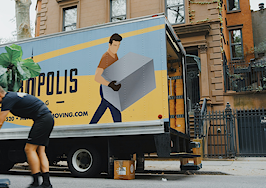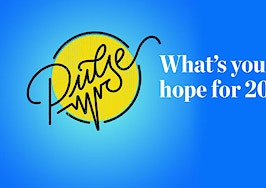There’s no doubt about it: When it’s time to sell, the vast majority of homeowners want an agent on their side.
The share of homes listed for sale by owner — those that bypass a real estate agent entirely — is now at its lowest point in decades, according to the National Association of Realtors 2021 Profile of Home Buyers and Sellers.
The report, based on an annual survey the trade group has conducted for four decades, makes clear that 9 in 10 homeowners are working with an agent when it’s time to sell. And most of the ones who don’t are simply selling to someone they already know.
That leaves a tiny sliver of sellers who are actually braving the open market to sell to a stranger without an agent to represent them.
What do we know about the people who take the “for sale by owner” route? Why do they do it? And why do their homes routinely sell for less money than those listed by agents?
In a statement to Inman, NAR Chief Economist Lawrence Yun was quick to point out the role that agent expertise can play in getting the best price for a seller.
“There are many business models,” Yun wrote. “However, consumers have increasingly valued and sought out the high-quality service, trusted expertise and ultimately the financial reward they’ve received when working with a Realtor.”
While this is undoubtedly part of the picture, socioeconomic and geographic factors also weigh heavily on which homes hit the market without an agent — and the prices they end up selling for.
Listing for less
It’s common knowledge in the industry that “for sale by owner” homes go for less money than those listed by agents do.
NAR’s survey puts numbers to this, finding that homes listed with an agent sell for a median price of $318,000, compared with a median price of $260,000 for homes listed by the owner.
But to understand why these homes go for less money, it’s also important to look at who’s doing the selling.
Zillow’s research team explored this question last month.
In its report, the team found that in September of this year, the typical FSBO seller nationwide asked for 18 percent less up front than the median homeowner who worked with an agent. That’s roughly the same difference in the actual sale price these homes went for, as tracked by NAR.
“So,” the report concludes, “FSBOs generally are not cheaper because the home is listed at a discount — rather, FSBOs are cheaper because they are more likely to be in inexpensive rural and/or remote areas and are generally smaller home types.”
Of homeowners with household incomes of $50,000 or less per year, nearly 1 in 4 decided not to use a listing agent, Zillow’s research suggests.
That’s a significantly higher share than what’s seen in higher income groups.
As Zillow’s team examined the reason for this, the rural-urban divide loomed large. An estimated 7 percent of rural sellers went without an agent, compared to 5 percent of suburban listings and 4 percent of sellers in the city.
Black and Latino sellers were also less likely to work with an agent than their white counterparts, the report found. The Zillow team attributes this in part to “structural inequities in income and, in turn, home value and home type.”
Homeowners with an urgent need to sell their home quickly overwhelmingly went with an agent, NAR’s survey shows. Sellers who reported being in no rush to sell were much more likely to list their homes without help.
Given these factors, even if every single one of these listings were listed with an agent, it’s hard to see their final sale price matching that of the typical home that already makes its way to a listing agent.
Familiarity over technology
Still, the vast majority of sellers appear to be wary of navigating the market on their own.
Big industry players are trying to change this, offering an array of technological alternatives that aren’t reliant on agents being part of the seller’s side of the transaction.
So-called iBuyers like Opendoor and Offerpad have built their business models around making direct cash offers to sellers, whether those homeowners are working with an agent or not.
The real estate brokerage Redfin has made a play in this instant-cash-offer space, as had the giant listing portal Zillow before it had to shut down its iBuying business earlier this year.
But these iBuyers make up a relatively small portion of the home market — approximately 1 percent of all home transactions, by some recent estimates.
Instead, the typical FSBO seller isn’t selling to a tech-fueled house flipping company, but to someone they already know.
In 2021, during an extreme seller’s market exacerbated by high demand for homes during the pandemic, a mere 3 percent of sellers sold their homes to a stranger after listing their homes themselves.
A larger group, amounting to 4 percent of all sellers, sold to someone they knew without going through an agent.
While not as lucrative as the typical transaction, these home sales to friends, family and neighbors did come with some advantages to the seller. For one thing, because they were working with a familiar face, the seller typically received 100 percent of asking price. And for another, these homes typically spent less than a week “on the market,” according to NAR.
This familiar-face approach also opens up methods of sale not available to the typical seller.
“If the buyer and seller know each other, the sale can be either an arms-length transaction consistent with local market conditions or it may involve considerations that would not be relevant in the absence of a prior relationship,” NAR’s report states.








